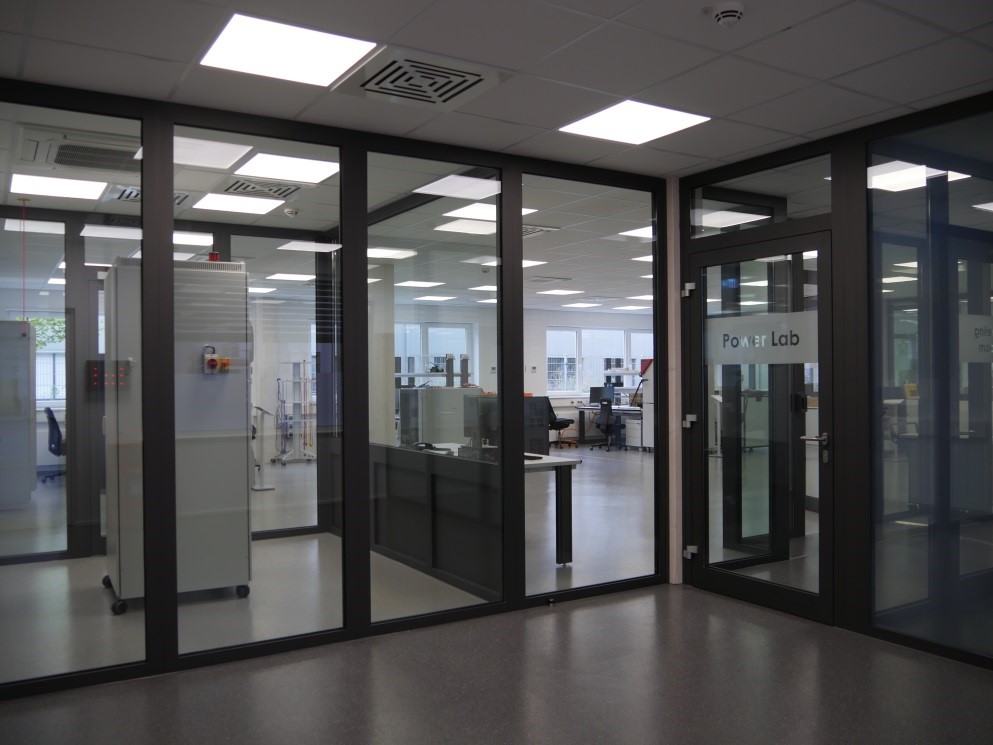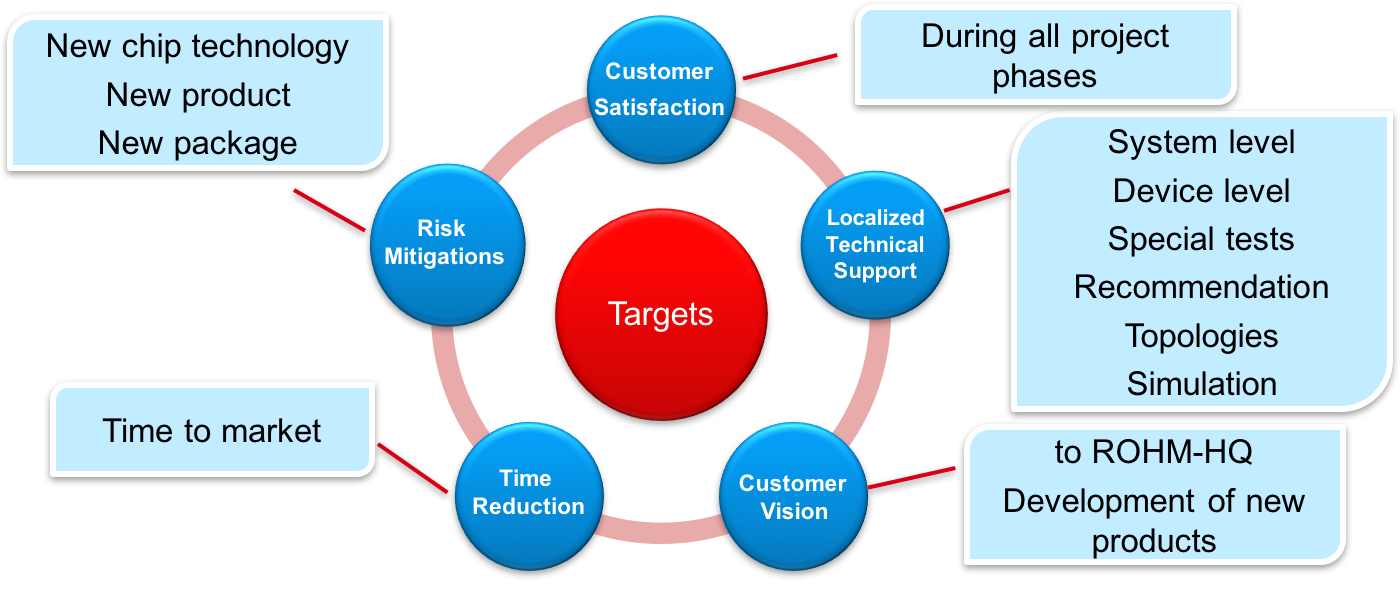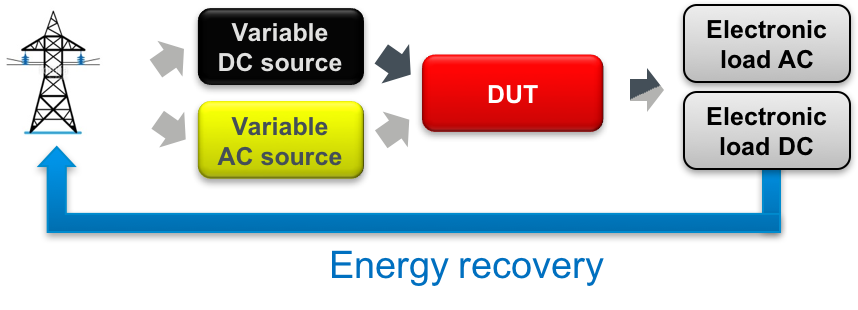For the best technical support at application level
05/16/2018

Recently ROHM Semiconductor opened its new “Power Lab” for the analysis of power components and systems at the European Headquarter facilities at the Willich-Münchheide location near Düsseldorf, Germany. The main purpose of the 300 m2 lab is enhancing the usability: Making products and systems easier to use and matching them closely to customer needs and requirements.
Nowadays every new product, from electric vehicles and charging station infrastructure, solar and wind power plants, industrial machinery to white goods such as washing machines, uses an increasing number of power semiconductors. These components need to comply with energy efficiency requirements, which have to be tested and validated at an early stage of development.

Caption:
ROHM Semiconductor’s new “Power Lab” aims to provide customers with the best technical support at an application level.
In all phases of development, system engineers are facing a lot of challenges: The current trend in power electronics to achieve ever higher efficiency with higher power density and higher reliability at the same time, leads to new challenges during the design phase like thermal management. At the same time the complexity of the system requirements is constantly increasing while resources and project time are limited. It is no wonder system engineers today tend to choose the easiest way to design their circuits. So, engineers need data to show them how to use the power devices in their applications in the best possible way. In other words, they need data to find the most reliable solution with the easiest usage and lowest cost.
As it is well-known, power devices are key products in all power system applications. For each power device, there is a datasheet and for each power board there are system requirements. But sometimes the operating points of the final application are not covered in the datasheets.
One reason is that power semiconductors are used in different application fields where different parameters play important roles. Depending on the application, different loads (DC Motors, AC Motors, batteries, etc.) and different power sources (batteries, grid, etc.) are used. If the final products will be used all over the world, so various environmental conditions and possibly varying grid performance are important factors to be considered.
To meet all these challenges, engineers rely on local technical support on application level.
Creating the Power Lab
That is exactly the purpose of ROHM’s new Power Lab: By analyzing power components and systems customers are provided with the best support at the application level. When planning the lab to achieve this goal, many factors had to be considered: Quality and safety of the equipment were the highest priority when test benches with state of the art and advanced technologies were established. At the same time flexibility of usage was very important. To provide fast and high-quality support to the customers, a flexible and modular design of the test setups was needed. This also enabled the Power Lab to be prepared for future products and market trends.
Quickly it became clear that the Power Lab would be no off-the-shelf product. After the test benches had been specified, ROHM had to decide whether an experienced design house should take over the design or ROHM engineers would be designing the Power Lab by themselves. After a precise analysis, ROHM opted for the latter. In this way, it was simpler to ensure the high quality and reliability of the test benches and by keeping know how in-house, future modifications become easier.
It took several months of building until the Power Lab went into operation in late 2017. Now ROHM can electrically characterize all of its semiconductor components like SiC MOSFET Transistors, SiC Diodes, IGBTs, Si Power MOSFET Transistors and Gate drivers with voltages up to 8000VDC. For this purpose and others, the lab is equipped with several test benches with a separate high voltage area.
From electrical characterization to calorimetric tests
The test benches for electrical characterization are aimed at the characterization of MOSFETs and IGBTs. Here switching times and losses, conduction losses and short circuit behavior are measured with voltages up to 1500 V. The modular concept ensures high flexibility, so different packages (THD, SMD, Modules, customer boards) can be tested. A high voltage test bench allows characterization with voltages up to 8000 V DC. It is located in a separate room to protect the tester during the operation.
With the Power test bench converters (AC/DC, DC/DC, DC/AC, and AC/AC) can be tested under real application conditions up to 15 kVA. Additionally, it can perform high-precision measurements of efficiency and losses with power analyzers. The test bench features an AC power supply (grid emulator) and various electronic loads (AC and DC). Maximum voltages under test are 1500VDC and 400VAC. Additionally, a regenerative function allows part of the used energy to be fed back into the grid resulting in a low total energy consumption during testing.

Caption:
The power test bench feeds energy back into the grid to minimize the energy consumption.
The calorimetric test bench is for analyzing the thermal behavior of the power devices. The devices under test (DUT) can be modules or discrete devices, electronic boards, or even complete power electronics systems. This test bench features continuous power supplies with high current level. A climatic chamber allows the tests to be performed under special conditions with temperatures between -40 °C and +180 °C and humidity between 10 % and 98 %.
Another test bench allows engineers to test the isolation of in-house developed circuits, PCBs or reference designs. The power supply enables a programmable output ramp up to 6 kV and 10 mA. For example, the clearance and creepage distances of isolated Gate driver boards can be tested with this setup.
